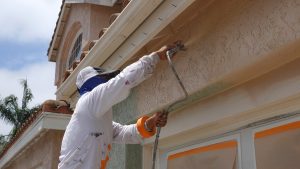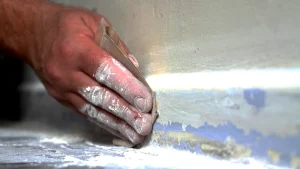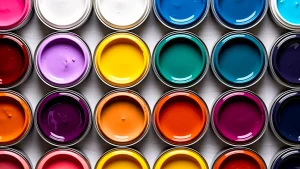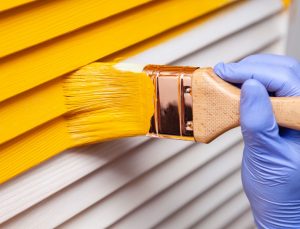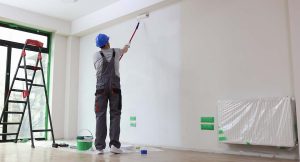Proper surface preparation is essential in painting as it creates a smooth and even surface for the paint to adhere to, resulting in a professional-looking finish. Without proper surface preparation, the paint may not adhere correctly, leading to issues such as bubbling, cracking, or peeling.
Additionally, improper surface preparation can result in an uneven application of paint, which can be especially noticeable on walls and ceilings.
Proper surface preparation also ensures that the paint will last longer and will require less maintenance in the long run. If the surface is not cleaned or properly prepared before painting, it can trap dirt and grime under the paint, which can lead to discoloration or other damage over time.
Understanding surface preparation
Surface preparation is the process of preparing a surface for painting or coating by cleaning and preparing the surface for adhesion. This process typically includes cleaning, sanding, filling cracks and gaps, and priming.
The goal of surface preparation is to create a clean, smooth, and even surface that is ready to receive paint or coating. It is a crucial step in the painting process as it ensures that the paint will adhere correctly, have a smooth and even finish, and last longer.
Surface preparation is important in painting for several reasons:
- Adhesion: Proper surface preparation ensures that the paint will adhere correctly to the surface, resulting in a smooth and even finish. Without proper surface preparation, the paint may not adhere correctly, leading to issues such as bubbling, cracking, or peeling.
- Longevity: Proper surface preparation ensures that the paint will last longer and will require less maintenance in the long run. If the surface is not cleaned or properly prepared before painting, it can trap dirt and grime under the paint, which can lead to discoloration or other damage over time.
- Cost-effective: Proper surface preparation can save time and money in the long run. Skipping this step can result in a poor-quality paint job that requires frequent maintenance and repairs.
- Aesthetics: Improper surface preparation can result in an uneven application of paint, which can be especially noticeable on walls and ceilings. This can make the paint job appear less professional and detract from the overall appearance of the space.
- Safety: Surface preparation involves the removal of loose paint, rust, and other debris that can be hazardous if left on the surface. It also helps to identify any potential hazards such as lead paint or mould that may require additional safety measures.
Common Surface Preparation Techniques
Cleaning the surface
Cleaning the surface is an important step in the surface preparation process for painting. This step involves removing dirt, grime, and other debris from the surface to ensure that the paint will adhere correctly and have a smooth and even finish. There are several methods for cleaning a surface.
Sanding
Sanding is another important step in the surface preparation process for painting. Sanding is the process of using abrasive materials to smooth and even out a surface. This step is important because it removes any imperfections such as rough spots, bumps, or stains on the surface, which can make the paint look uneven. Sanding also promotes better adhesion of paint to the surface.
Priming
Priming is a step in surface preparation that involves applying a primer coat to the surface before painting. A primer is a sealant and adhesive that helps paint adhere to the surface better, providing a stronger bond between the surface and the paint.
The Impact of Improper Surface Preparation
Improper surface preparation can lead to a variety of issues that can negatively impact the final paint job. For example, if the surface is not properly cleaned or sanded, paint may not adhere correctly, resulting in peeling, flaking, bubbling or blistering.
Improper surface preparation can also result in an uneven surface, which can make the paint appear uneven or blotchy. Stains such as water stains or smoke stains can bleed through the paint, ruining the final appearance if the surface is not properly cleaned or primed.
Additionally, poor adhesion, leading to premature failure of paint and the need of frequent touch-ups or repainting. Overall, proper surface preparation is crucial in achieving a professional-looking paint job that will last longer and require less maintenance.
Conclusion
In conclusion, proper surface preparation is a critical step in the painting process that is essential for achieving a professional-looking paint job. By cleaning, sanding, filling cracks and gaps, and priming, you can create a clean, smooth, and even surface that is ready to receive paint.
By preparing the surface correctly, you can ensure that the paint will adhere correctly, have a smooth and even finish, and last longer. Skipping this step can result in a poor-quality paint job that requires frequent maintenance and repairs.
Proper surface preparation is crucial in achieving a paint job that will look great, last longer and be cost-effective. It is worth taking the time to properly prepare the surface before painting to ensure a successful outcome.

